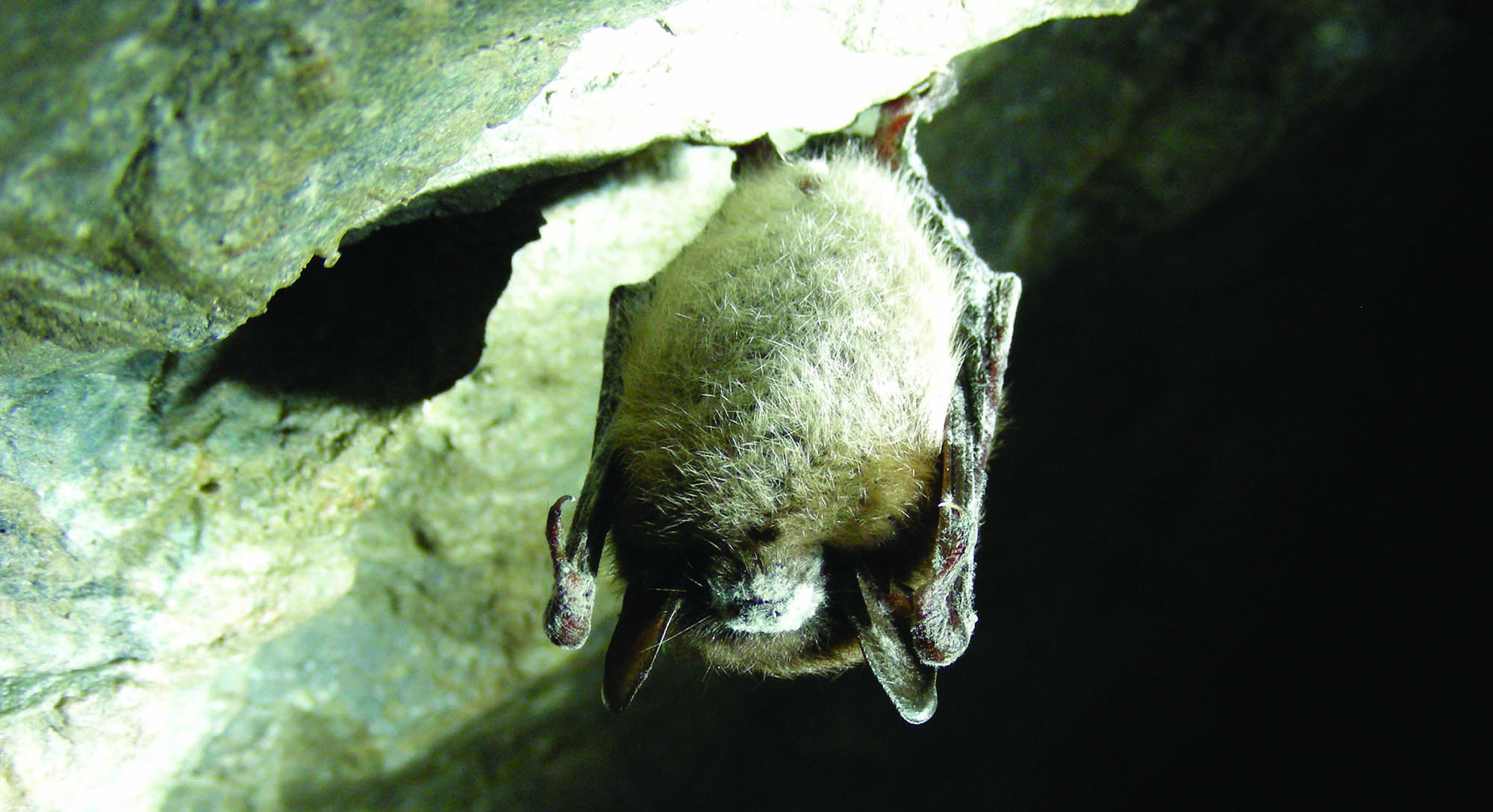
Eyal Frank, Harris Public Policy assistant professor, quantifies the harms of biodiversity loss.
If there’s one animal in need of a rebrand, bats are a strong contender. Many bat species sleep in caves, hanging upside down. They typically fly at night, giving them an inherently spooky vibe. And, of course, bats are known to carry a wide range of coronaviruses. But for Eyal Frank, Harris Public Policy assistant professor, bats and several other maligned creatures—vultures among them—offer essential insights into some of today’s most urgent environmental and economic challenges.
In a study published last fall in Science, Frank, who has been a faculty member at the University since 2018, demonstrates how the decline of bats in North America has contributed to a rise in infant mortality. The study highlights a key factor driving this trend: Most bats in North America feed on insects, including crop-damaging pests like moths. With fewer bats to control these pests, farmers are forced to rely more heavily on insecticides. The study shows that increased insecticide use correlates with greater exposure to harmful chemicals, which is known to adversely affect the health of newborns.
Frank’s unconventional approach to research—bridging the worlds of economics and ecology to measure the tangible value of biodiversity—can be traced back to his teenage years growing up in Israel. “I watched Princess Mononoke, and it really resonated with me,” Frank recalls, referring to the iconic Studio Ghibli film about a mystical forest under siege. “No one’s portrayed in that movie as absolutely evil. You totally sympathize with the plight of [the people who] just want a better life”—even though that better life involves harming the environment. For Frank, the film provided an unusually nuanced perspective on the conflicts between development and conservation, a viewpoint he found lacking in much of Western media.
That perspective guided him through his time in Columbia University’s Sustainable Development PhD program, a rare interdisciplinary course of study that requires training in both economics and the natural sciences. At Columbia Frank immersed himself in causal inference, systems thinking, and statistical methods, though finding his niche proved challenging.
The right research question finally came to him late one evening around 2015 while he was browsing the US Geological Survey website. There he stumbled upon a report about white-nose syndrome, an invasive fungal disease that was devastating bat populations across North America. It was “spreading year after year into more counties,” Frank recalls.
Bats, Frank knew, are nature’s pest controllers, saving billions of dollars annually in crop protection by consuming insects. He hypothesized that their sudden disappearance could reveal the hidden costs of biodiversity loss—if he could find the data to support his theory.
“This seemed like a very rare opportunity for a natural experiment,” Frank explains, envisioning how he could connect ecologists’ observations about biodiversity loss to broader impacts on human behavior. “I could see the links that potentially might not be visible or as obvious” to scholars focused on just one discipline.
Over the next several years, Frank painstakingly compiled data from various sources: county-level pesticide sales, agricultural yields, and public health statistics. His findings were startling. The collapse of bat populations, he discovered, led to a measurable rise in insecticide use, which, in turn, correlated with an increase in infant mortality—likely due to chemical exposure. The implications were profound: Biodiversity loss wasn’t just an environmental issue. It also had significant economic and public health consequences.
Yet, despite the importance of his findings, Frank struggled to publish the research as a cross-disciplinary academic. Economics journal editors felt the paper included too much ecology, while ecological reviewers balked at its economic framing. As a result, the research—begun a decade ago—was only published this past fall, after years of rewriting.
The paper itself also drew polarized reactions. Economists praised Frank’s innovative approach to quantifying ecological impacts, while ecologists, less familiar with causal inference methods, were skeptical of his bold conclusions. “Dr. Frank is one of a few economists who are working at this frontier,” says Anant Sudarshan, an associate professor of economics at the University of Warwick and visiting scholar at the Energy Policy Institute at the University of Chicago, adding that Frank’s work “requires insights from outside economics, and this is why it has not historically been in the mainstream of economics research, notwithstanding its substantive importance.”
But Frank is undeterred by the squabbling. He has more pressing questions to explore. In a forthcoming paper, for instance, he examines how wolves influence deer-vehicle collisions in Canada. His findings reveal that regions with stable wolf populations see a roughly 30 percent drop in animal-related crashes compared to areas without wolves. When the United States decided to embark on eradicating wolf populations, “we couldn’t imagine just how deer populations would explode by orders of magnitude,” Frank says. Now, decades later, we’re seeing the costs of those decisions.
This year Frank plans to investigate the European Union’s 2019 ban on neonicotinoid pesticides, which have been linked to negative impacts on bees and birds. “What we’re trying to first establish is, did nature heal?” Frank asks. “Did we see some resurgence in some of these insect populations? And then, what was the cost to farmers?”
Eventually Frank hopes to turn his attention to whales—specifically, how their feces fertilize ocean ecosystems and potentially boost fisheries. “For years I’ve wanted to work on whales,” he says. “They’re the great fertilizers of the ocean.” For now, though, his focus remains on the unsung heroes of our ecosystems.
